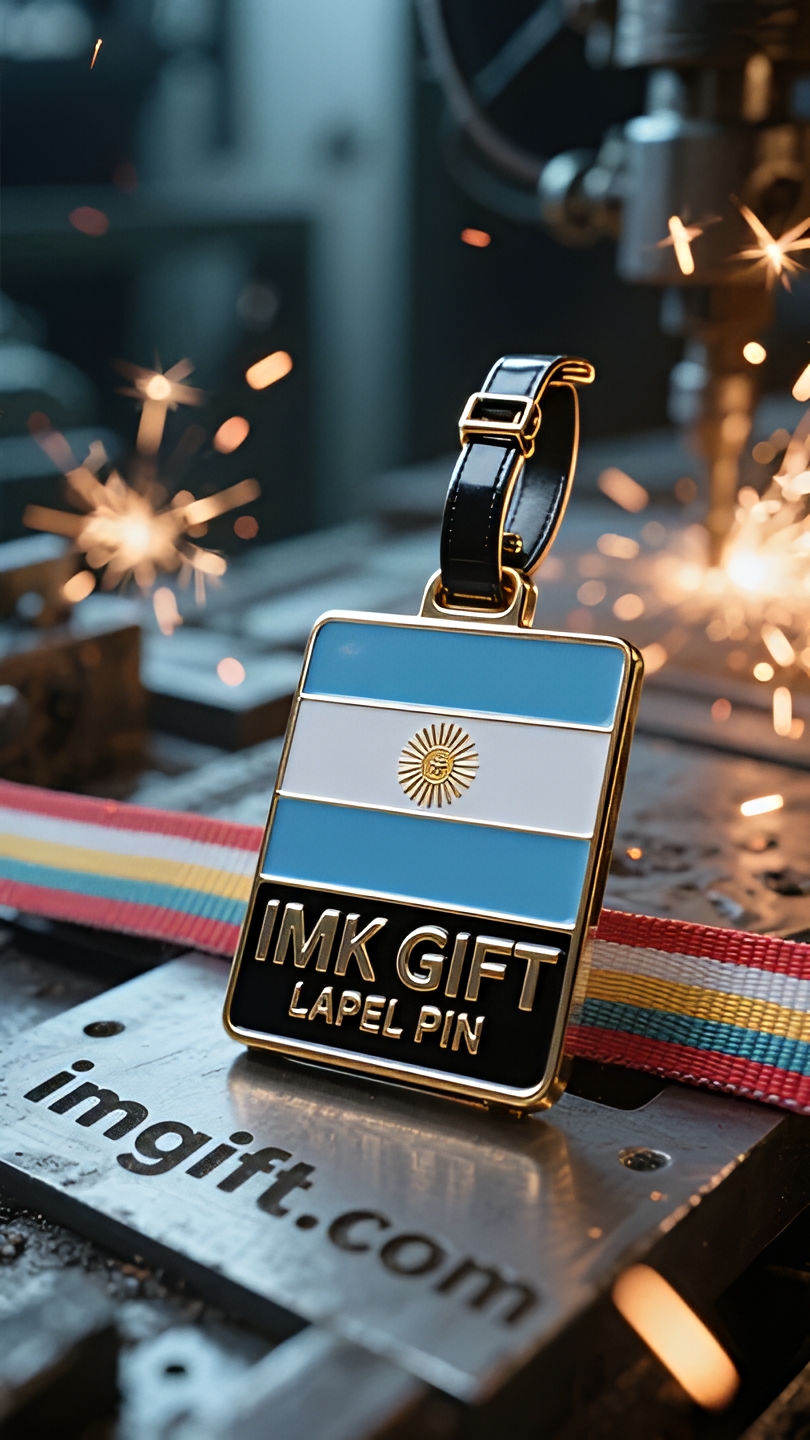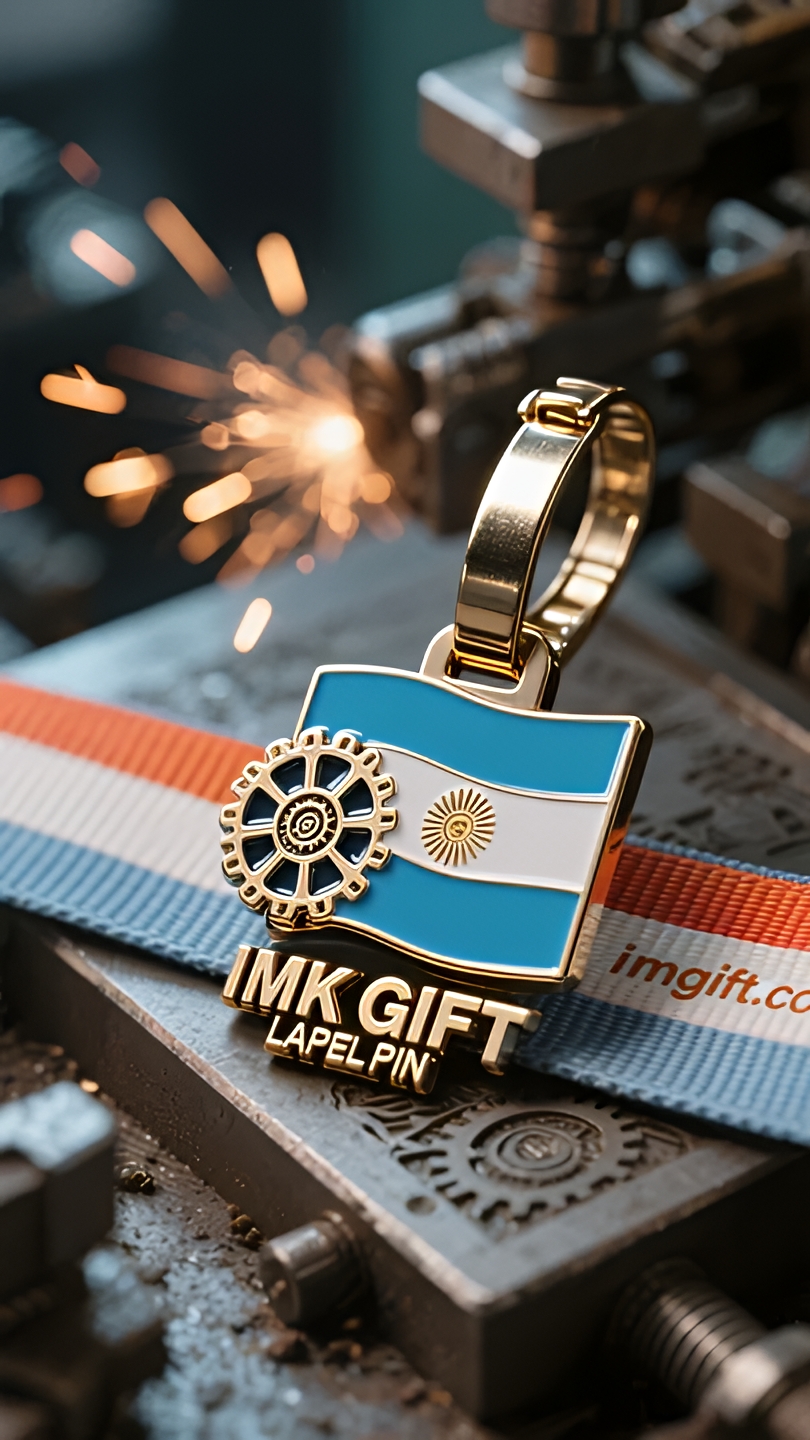in986-Dondequiera-que-florezcan-las-flores-de-Saibo-es-el-camino-a-mi-ciudad-natal
▼
En el resplandor del Día de la Independencia de Argentina, la bandera nacional azul y blanca y las brillantes flores de serafín se entrelazan formando un tótem nacional único. La libre voluntad del Río de la Plata se precipita en las franjas celestes, y los estambres de cinco pétalos, de un rojo brillante, condensan la vitalidad ardiente del continente sudamericano. Cuando estos símbolos se graban en etiquetas de equipaje, se convierten en la brújula que utiliza cada argentino para navegar por el mundo. El pequeño tamaño de la etiqueta de equipaje con forma de flor de Saibo es mucho más que un simple logotipo para su maleta. Lleva la tenacidad de las Pampas: así como la flor nacional aún puede florecer en tierras áridas, los argentinos siempre pueden estallar de creatividad en la adversidad; Está grabado con la inclusión de la bandera nacional, y el fondo azul y blanco es como el cielo abrazando todas las nubes, recordando a los viajeros que acepten las culturas extranjeras con una mente abierta. Las líneas dentadas en el borde de cada etiqueta de equipaje hablan de la espada del General San Martín que partió los grilletes durante la Guerra de la Independencia. A medida que la melodía del tango de Buenos Aires se desvanece, esta pequeña placa de metal se transforma en un borde fluido. Recuerda a los viajeros el resplandor matutino de las montañas de Córdoba cuando muelen yerba mate en un café parisino; y les hace sentir como si estuvieran viendo las banderas ondeando en la Plaza de Mayo cuando ven los patrones de nubes azules y blancas en Ginza, Tokio. Esto no es una simple muestra de nostalgia, sino la clave para transformar el espíritu nacional en un código de acción: no importa a dónde vayamos, debemos ser como las flores de sapo que se extienden en el viento, profundamente enraizadas en nuestra tierra natal y atreviéndose a florecer hacia el mundo. Lo que está prendido en el equipaje no es sólo una flor o una bandera, sino también una fábula sobre la perseverancia y la trascendencia de una nación en la marea de la globalización. Cuando nuestros dedos recorren los relieves cóncavos y convexos, escuchamos los susurros de nuestros antepasados: No importa lo lejos que vayamos, no olvidemos cómo ser como la flor de zafiro y convertir cada centímetro del lugar donde nos detenemos en una ciudad natal que valga la pena sembrar.
In the afterglow of Argentina’s Independence Day, the blue and white national flag and the brilliant sepia flowers interweave into a unique national totem. The sky-like stripes precipitate the free will of the La Plata River, and the bright red five-petal stamens condense the blazing vitality of the South American continent. When these symbols are cast into luggage tags, they become the compass for every Argentine to travel the world. The sepia flower luggage tag in a small space is far more than a logo for a suitcase. It carries the tenacity of the Pampas grassland – just as the national flower can still bloom in barren land, Argentines can always burst out with creativity in adversity; it is engraved with the inclusiveness of the national flag, and the blue and white background is like the sky embracing all the clouds, reminding the wanderers to accept foreign cultures with an open mind. The jagged lines on the edge of each luggage tag tell the sword edge of General San Martin that split the shackles in the War of Independence. When the tango melody of Buenos Aires fades away, this small metal plate turns into a flowing national border. It reminds travelers of the morning glow of the Cordoba Mountains when they grind yerba mate in a Parisian café; seeing the blue and white cloud pattern in Tokyo’s Ginza is like seeing the flags flying in the Plaza de Mayo. This is not a simple token of nostalgia, but a key to transform the national spirit into a code of action – no matter where you go, you must be like the saipo flowers that spread in the wind, deeply rooted in the homeland and dare to bloom to the world. What is pinned on the bag is not only a flower or a flag, but also an allegory of a nation’s perseverance and transcendence in the wave of globalization. When our fingertips touch the concave and convex relief, we hear the whispers of our ancestors: no matter how far you go, don’t forget how to be like the saipo flowers and turn every inch of your stop into a hometown worth sowing.
在阿根廷独立日的余晖中,蓝白相间的国旗与灿若朝霞的赛波花交织成独特的国家图腾。天幕般的条纹里沉淀着拉普拉塔河的自由意志,艳红的五瓣花蕊中凝结着南美大陆的灼灼生命力。当这些象征被铸造成行李牌,便成为每个阿根廷人行走世界的指南针。
方寸之间的赛波花行李牌,远不止是旅行箱的标识。它承载着潘帕斯草原的坚韧——正如国花在贫瘠土地仍能怒放,阿根廷人总能在逆境中迸发创造力;它镌刻着国旗的包容性,蓝白底色如同天空拥抱所有云彩,提醒游子以开放胸襟接纳异域文化。每处行李牌边缘的锯齿纹路,都在诉说独立战争中圣马丁将军劈开枷锁的剑锋。
当布宜诺斯艾利斯的探戈旋律渐远,这枚小小金属牌便化作流动的国境线。它让远行者在巴黎咖啡馆研磨马黛茶时,想起科尔多瓦山脉的晨曦;在东京银座看到蓝白云纹,恍若望见五月广场飘扬的旗帜。这不是简单的怀旧信物,而是将民族精神转化为行动密码的密钥——无论行至何处,都要像迎风舒展的赛波花,既深扎故土之根,又敢向世界绽放。
别在行囊上的不仅是一朵花、一面旗,更是一个民族在全球化浪潮中坚守与超越的寓言。当指尖抚过凹凸的浮雕,我们听见祖先的低语:走得再远,勿忘如何像赛波花般,将每寸停驻之地都变成值得播种的家乡。
▼
Contact Us
📞 Tel: +0086-760-85286839
📧 Email: sales3@imkgift.com








